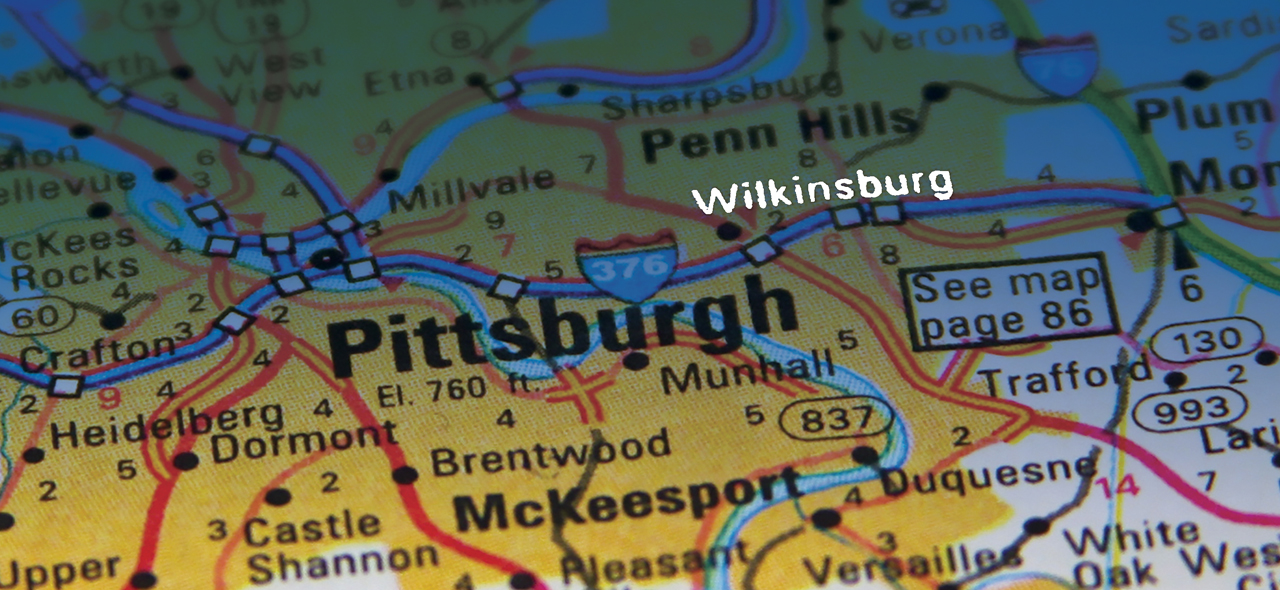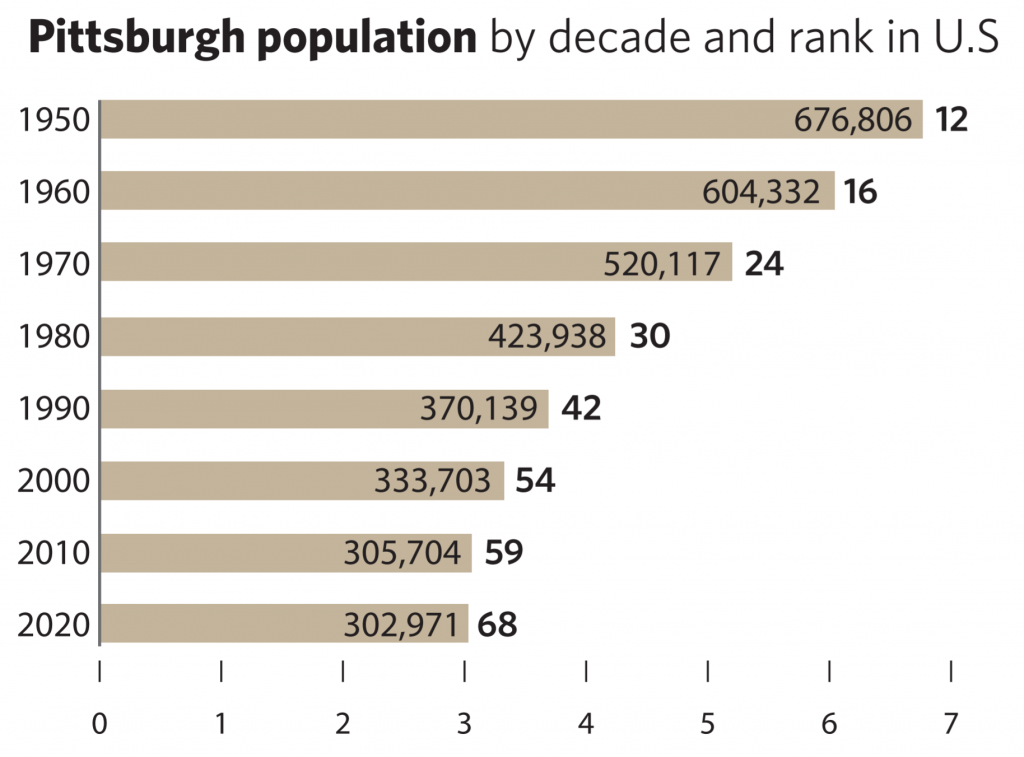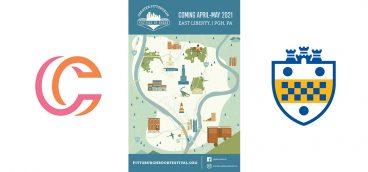Needed: City Leadership

Until yesterday, in 60 years, I have only called a political representative once to try to persuade him to vote on something I thought was important. It was in October 2008, when Congress was again considering the Troubled Asset Relief Program (TARP). Days earlier, the bill failed to pass the U.S. House by 13 votes, and our financial system was just days from collapse.
My congressman was Jason Altmire, a friendly, capable guy. When he was new on the Pittsburgh scene, I introduced him to a lot of people. I liked him, but later as a congressman, he voted against TARP the first time. With the country in deep peril, in my view, I didn’t mince words when I left a message with his aide: “Please tell Jason that Doug Heuck called (I spelled my name and pronounced it — H-O-Y-K) to ask him this question: “Why hold public office at all if you’re not going to vote the right way the one time your country actually needs you?”
As individuals, we generally have little influence over what happens in Washington, D.C., but the same is not true about what my old friend and mentor, the late Post-Gazette Editor John Craig, used to call “The City State of Pittsburgh,” by which he meant this region. Whether we realize it or not, sometimes we can exert a pivotal influence over what happens here, and at times, it’s our duty to do that.
I believe that one of those times is right now — following Pittsburgh City Council’s vote against merging with Wilkinsburg.
Since 1995, part of my job as a journalist has been to compare Pittsburgh’s performance against regions across America in hundreds of measures. To me, it could not be more obvious: Expanding Pittsburgh by welcoming Wilkinsburg would not only improve both municipalities dramatically; it also would set an example and catalyze a more prosperous future for the whole region. Conversely, not seizing this opportunity would show that we are too mired in parochial ways and petty politics to recognize reality — namely, that without taking bold steps, Pittsburgh and this whole region face further decline.
***
The first time I became aware of Wilkinsburg and its problems was two years after I moved to Pittsburgh. In 1987, I got an apartment in Wilkinsburg. It was okay as a renter, but terrible if you owned a business or a home — taxes were extremely high and services and schools were weak. Since then, 35 years have passed, and Wilkinsburg has gone from bad to worse. The situation has become untenable for anyone who has paid attention.
Unfortunately, that doesn’t include Pittsburgh’s City Council, which on Tuesday voted against annexing Wilkinsburg. Council members claim they didn’t want to be rushed. They weren’t rushed. They’ve known of the plans for more than a year and discussions with council began last June. But council wouldn’t hear the evidence or prepare in any way until a Jan. 4 court order forced them to vote by early April whether to allow Wilkinsburg voters to decide their own future in a May referendum. Instead of beginning a process of inquiry then, City Council quickly lined up against it. Some members feared they’d lose the next election if annexation changed voting districts; others feared their districts would lose attention if Wilkinsburg joined the city; and others probably didn’t understand what was at stake and simply feared change.
As of now, Pittsburgh City Council members appear to be more concerned with their own interests than the interests of this region. Council members recently blatantly violated the city’s charter by giving themselves a pay raise that was seven times higher than the legal limit. They rescinded it only after getting caught.
The leadership void doesn’t stop there, however. Pittsburgh Mayor Ed Gainey said he didn’t want to get involved in the Wilkinsburg issue and took no stand at all. The fact that he’s new doesn’t excuse this timidity. Wilkinsburg was part of his district when he was a state representative and he’s well aware of the issues. He needs to stand up and lead.
It also appears that after years of extensive layoffs, the local news media has lost its institutional memory and ability to see the big picture. Instead of being a champion for progress, the Post-Gazette editorial board favored delaying annexation and even faulted Tracey Evans, the Wilkinsburg Community Development Corp. leader who has spearheaded the merger campaign (and all other recent Wilkinsburg revitalization efforts), for being “too aggressive.” Nothing ever gets done without her kind of undaunted leadership, and the fact is we need more “aggressive” actions around here.
There have been a few elected leaders, however, who understand the importance of annexation and deserve recognition. Chief among them is Allegheny County Executive Rich Fitzgerald. He and City Controller Michael Lamb have tried to talk sense into City Council. City Councilman Anthony Coghill also tried to rally his colleagues, but on Feb. 8, only he and Councilman Corey O’Connor voted for annexation.
***
If you drive along Penn Avenue from Downtown through East Liberty, Bakery Square and beyond, you see renewal and private investment. But when you get to the Wilkinsburg line, that private investment stops dead. The fact is, there has been no appreciable private sector investment in Wilkinsburg in decades because the taxes are twice that of neighboring Pittsburgh. It’s a recipe for business failure and everyone knows it.
In that context, since 2003 — nearly 20 years — a dedicated group of civic-minded citizens and leaders in the public, private and nonprofit sectors have worked to bring an economic turnaround to Wilkinsburg. The broad-based effort has included millions in government money, philanthropic money and business tax credit investments. The hope was that this would catalyze private investment. But it hasn’t happened, and most of those who’ve been involved now believe that private investment will never occur until there’s a competitive tax rate in Wilkinsburg. And that means joining Pittsburgh. Hence, the merger effort.
The Wilkinsburg School District was an abject failure until six years ago, when the district arranged to send its 7th through 12th graders to the Pittsburgh Public Schools. It gave those older students a future and that’s been a universally recognized success. Not only are the city’s magnet schools available to the Wilkinsburg youngsters, but so is The Pittsburgh Promise. Right now, only pre-K through 6th graders in Wilkinsburg continue in the borough’s schools. A recent study performed by PFM, the nationally known consultant that helped the City of Pittsburgh manage through its Act 47 distress, shows that merging the two school districts completely would mean that more than $10 million in one-time cash would come to the Pittsburgh Schools from a cash surplus in Wilkinsburg, plus unspent COVID money from Wilkinsburg schools. In other words, there will be no drain on Pittsburgh Schools.
Beyond the schools, however, is the bigger picture. That’s where merging Wilkinsburg with Pittsburgh becomes imperative.
There’s no question that Wilkinsburg desperately needs Pittsburgh — despite what some on Wilkinsburg borough council who are clinging to their jobs say. The same structural economic changes that overwhelmed this region 40 years ago and led some 200,000 people to move away for jobs stacked the deck against Wilkinsburg. And despite the best efforts of many, it is a failed municipality.
But what about Pittsburgh? What’s in it for Pittsburgh?
Pittsburgh is a great place in a lot of ways. And the city and region have done well to overcome the staggering job losses of the 1980s. But the demographic changes back then have meant that we’re the only big city metro area in the country that’s lost population continuously over the last 30 years. We’ve fallen behind other regions and that will continue if we follow the same path.
The City of Pittsburgh has shrunk steadily from its 1950 peak of 676,806 people to 302,971 in 2020. Now, Pittsburgh is about to lose its “big city” status – and various channels of state and federal funding — by falling below 300,000 people. That happened to Buffalo 21 years ago, drawing dismal headlines and realities.

Here are the top 10 U.S. cities with population of less than 300,000 in the 2020 census.

Do we want to be Greensboro, North Carolina or Lincoln, Nebraska? Have you even heard of Chandler, Arizona or Chula City, California? And yet Pittsburgh is all but guaranteed to join that club and fall below 300,000 by the next census if we don’t do something to stop it.
Welcoming Wilkinsburg is an important first step. Imagine if Wilkinsburg becomes a vibrant neighborhood instead of a place most people avoid. Of course, it’s possible. We just need some vision and political will. With those two magic ingredients, a whole new future awaits both Wilkinsburg and Pittsburgh.
Bringing Wilkinsburg into Pittsburgh would increase Pittsburgh by more than 14,000 people overnight. That would not only keep us above 300,000 but it would provide something we haven’t had around here — a catalyst for growth and a new spirit of optimism — that instead of just watching as we fall farther behind, we’re willing to do what’s necessary to move ahead.
I’ve lived and worked here my entire career and I’m concerned about the area’s future. I think we need to take some bold actions. That’s why yesterday I called and emailed each Pittsburgh City Council member, asking them to vote again — and this time to vote unanimously — to annex Wilkinsburg. Only if council votes for annexation will the residents of Wilkinsburg be able to decide their own future through a ballot referendum.
If you care about what happens in Pittsburgh too, I urge you to contact Pittsburgh City Council, whether you live in the city or not. (Think regionally!) Here are their names, numbers, and email addresses.
Dist. 1. Bobby Wilson: 412.255.2135 sally.stadelman@pittsburghpa.gov
Dist. 2 Theresa Kail-Smith: 412.255.8963 theresa.kail-smith@pittsburghpa.gov
Dist. 3. Bruce Kraus: 412.255.2130 brosha.tkacheva@pittsburghpa.gov
Dist. 4. Anthony Coghill: 412.255.2131 blake.plavchak@pittsburghpa.gov
Dist. 5. Corey O’Connor: 412.255.8965 district5@pittsburghpa.gov
Dist. 6. Daniel Lavelle: 412.255.2134 daniel.wood@pittsburghpa.gov
Dist. 7. Deb Gross: 412.255.2140 district7@pittsburghpa.gov
Dist. 8. Erika Strassburger: 412.255.2133 district8@pittsburghpa.gov
Dist. 9. Ricky Burgess: 412.255.2137 reverend.burgess@pittsburghpa.gov
I also left a message for Pittsburgh Mayor Ed Gainey. This is Pittsburgh, not Harrisburg, and we need a mayor who is willing to lead. He still doesn’t have an email listed on the city’s website, but his phone number is 412.255.2626.
It’s time for these officeholders to recognize their civic duties. And it’s our job to help them see their way. It doesn’t take more than a few minutes to send these emails and make these calls. Why not do your part and help make this annexation happen?
Imagine if city council and the mayor were to see the light, do an about face and unanimously support annexation and progress. Just think of the shock wave of can-do optimism that would create. Council and the mayor would rightly be remembered as the authors of a new future for the whole City State of Pittsburgh.
This is the most important opportunity to come to Pittsburgh in 25 years. Let’s not squander it.
Douglas Heuck publisher/editor

















